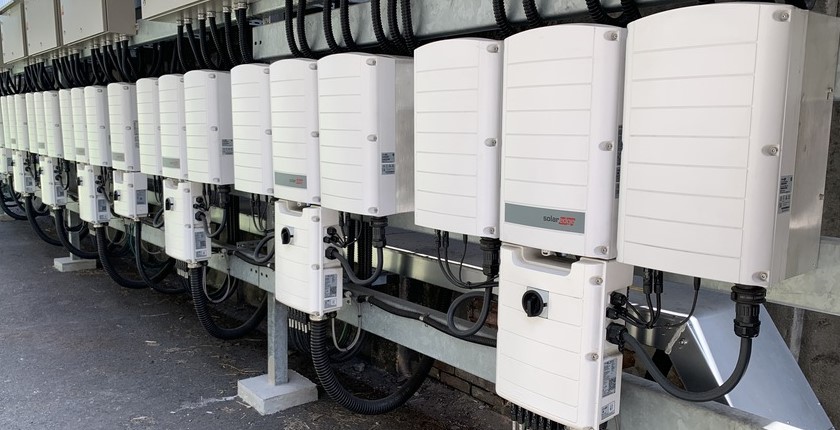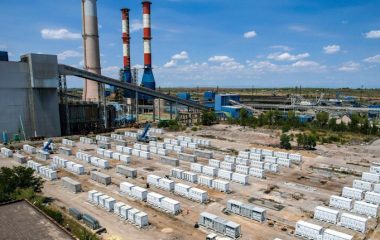
Photo: SolarEdge
Author: Meir Adest, Chief Information Officer and Founder of SolarEdge
Improved economics, governmental incentives, and increased awareness of solar energy as a viable alternative to grid power are leading more companies to go solar. With the potential to benefit businesses large and small, smart energy solutions are cropping up on unused rooftops of shopping centres, manufacturing plants, airports, schools, and hospitals.
Accordingly, PV (Photovoltaic) systems are now viewed as long-term investments that need to be closely managed and monitored in order to maximise ROI and bottom line savings. As with any serious investment, stakeholders must ensure that the employees of those businesses, as well as the assets which they are financing, are safe and secure from physical harm. Commercial buildings are high-value assets, and in the event of a fire, property loss and business interruptions can be costly.
To address these and other safety concerns, high-quality PV systems with enhanced safety features serve as an excellent solution.
Let’s start with the basics…
As long as the sun is up, high DC voltages energize the PV Modules and wires, even when the main circuit breaker is shut down. This means that, in the unlikely event of a fire or an emergency, firefighters must wait until the sun is down in order to intervene. In order to ensure their safety, firefighters commonly cut off electric grid supply to burning structures as a precautionary procedure before extinguishing the fire. They assume there is no risk of electrocution once the grid has been disconnected, allowing the spray of water and creation of holes in the roof so that heat and smoke can dissipate. However, this assumption is not true in the case of a typical PV roof system.
While this scenario can present risks, by applying advanced system design and through careful product selection these risks can be mitigated.

Safety begins at the module level
Traditional string inverters typically have limited safety functionality since they do not necessarily reduce the DC voltage when switched off. To meet safety standards, additional safety-specific hardware needs to be purchased and installed, adding more costs and labour to the installation.
While it can be difficult and expensive to address these safety concerns, some solutions provide advanced safety functionality. For example, SolarEdge developed a module-level power electronic solution based on power optimisers. Power optimisers are electronics attached to each Module that provide them with independence to maximize output.
Power optimisers turn solar Modules into smart Modules, increasing the system’s energy output and enabling module level monitoring and control. No less important, they provide enhanced safety. As part of its solution, SolarEdge’s SafeDC™ functionality reduces the Module voltage to 1 volt upon inverter shut down. This is important because even if firefighters are unaware of the existence of a PV system, safety mode at the Module-level is initiated when they disconnect the power.

Reducing installation time and room for error
The SafeDC™ functionality also helps to avoid the extra cost of installing safety-specific hardware – reducing installation time and room for error. In addition, with power optimisers each module can be constantly monitored to determine its performance and alert the installer or system owner of possible faults and potential safety risks. Maintenance personnel can therefore remotely monitor and troubleshoot, instead of performing diagnostics on site.
This confidence in SolarEdge’s SafeDC™ technology extends to firefighters installing SolarEdge on the roofs of their own fire stations. In the UK, a fire and rescue service selected SolarEdge for 700kW of PV systems on 12 different fire stations and 3 headquarter buildings. This was due to SolarEdge’s advanced safety features, such as its firefighter gateway, which enables central safety management for the PV systems, including automatic and manual system DC shutdown, real time indication of system DC voltage for safety assurance, and an emergency stop button for the entire PV system.
Know your government regulations and insurance requirements
Due to these safety concerns in combination with the proliferation of the solar energy market, safety regulations are being addressed by insurance companies, fire authorities, and utility companies around the world. While PV safety requirements are the responsibility of each individual country and may vary according to region, progressive regulations are having a collective impact on leading the solar industry towards improved system safety. Germany’s VDE-Fire Safety standards dictate that after switching off the AC power supply, first responders are not exposed to the risk of electrocution from direct contact with high-voltage DC cables.
Globally, more governments are announcing their commitment to a new environmental policy of becoming carbon neutral by 2050. This signifies a shift to a low-carbon economy and an opportunity to encourage investment and innovation in renewable energy. While global safety standards, technological innovation, and the consumer awareness of solar energy systems evolve swiftly, so do the financial rewards and environmental benefits to commercial businesses.
SolarEdge remains committed to leading the development of safer solar solutions that meet the evolving needs of commercial enterprises, government regulations, insurance requirements, and long-term sustainability goals.
SolarEdge will attend the OIE conference in Belgrade next 14th of September, see you there!


















Be the first one to comment on this article.